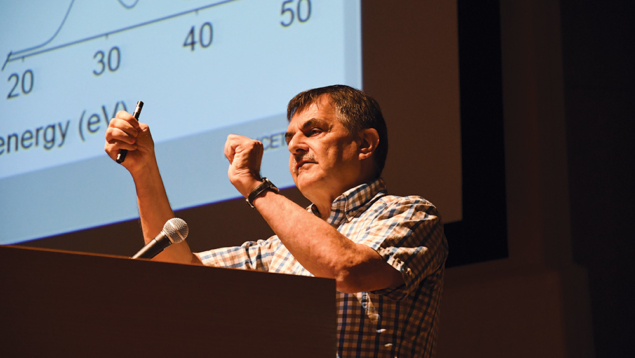
The 16th International Conference on Topics in Astroparticle and Underground Physics (TAUP 2019) was held in Japan from 9–13 September, attracting a record 540 physicists from around 30 countries. The 2019 edition of the series, which covered recent experimental and theoretical developments in astroparticle physics, was hosted by the Institute for Cosmic Ray Research of the University of Tokyo, and held in Toyama – the gateway city to the Kamioka experimental site.
Discussions first focused on gravitational-wave observations. During their first two observing runs, reported Patricia Schmidt from Radboud University, LIGO and Virgo confidently detected gravitational waves from 10 binary black-hole coalescenses and one binary neutron star inspiral, seeing one gravitational-wave event every 15 days of observation. It was also reported that, during the ongoing third observing run, LIGO and Virgo have already observed 26 candidate events. Among them is the first signal from a black hole–neutron star merger.
Guido Drexlin revealed the first measurement results on the upper limit of the neutrino mass
The programme continued with presentations from various research fields, a highlight being a report on the first result of the KATRIN experiment (KATRIN sets first limit on neutrino mass). Co-spokesperson Guido Drexlin revealed the first measurement results on the upper limit of the neutrino mass: < 1.1 eV at 90% confidence. This world-leading direct limit – which measures the neutrino mass by precisely measuring the kinematics of the electrons emitted from tritium beta decays – was obtained based on only four weeks of data. With the continuation of the experiment, it is expected that the limit will be reduced further, or even – if the neutrino mass is sufficiently large – the actual mass will be determined. Due to their oscillatory nature, it has been known since 1998 that neutrinos have tiny, but non-zero, masses. However, their absolute values have not yet been measured.
Diversity is a key feature of the TAUP conference. Topics discussed included cosmology, dark matter, neutrinos, underground laboratories, new technologies, gravitational waves, high-energy astrophysics and cosmic rays. Multi-messenger astronomy – which combines information from gravitational-wave observation, optical astronomy, neutrino detection and other electromagnetic signals – is quickly becoming established and is expected to play an even more important role in the future in gaining a deeper understanding of the universe.
The next TAUP conference will be held in Valencia, Spain, from 30 August to 3 September 2021.





